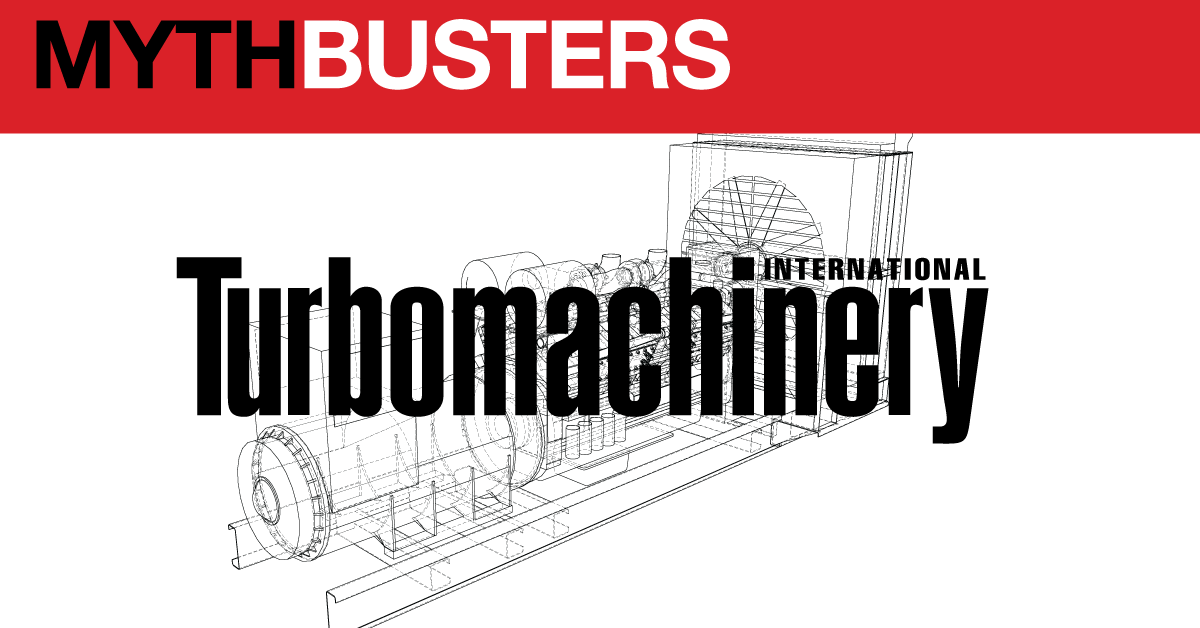Myth: Curtailed Output is Price Gouging
Klaus Brun and Rainer Kurz talk about summer electricity price gouging assumptions

During the summer, when temperatures soar, we often hear reports of power plants reducing output and curtailing the amount of electricity available to the grid. Is this a ruse by electricity providers to extract higher fees when the heat rises and we all need to run our air conditioners? Maybe the answer is not that simple.
Approximately 40% of U.S. electricity comes from natural gas thermal power plants. The remaining 60% is more or less equally split between coal, nuclear and alternative sources. Because of market and environmental drivers, most modern thermal power plants use natural gas as the fuel of choice. It reduces the amount of carbon emissions significantly when compared to other fossil fuels — especially coal.
The general layout of a natural gas thermal plant is usually a primary gas turbine cycle (Brayton Cycle) combined with a bottoming cycle that uses exhaust heat from gas turbines as a heat source. This arrangement is also called a combined cycle plant. The bottoming cycle most often utilizes a Rankine steam turbine cycle, but it can also use an Organic Rankine Cycle or a supercritical CO2 Brayton cycle. Both the primary gas turbine and the turbomachinery employed for the bottoming cycle drive electric generators.
Combining the two cycles allows thermal efficiencies in excess of 60% for most modern plants. In other words, 60% of the energy contained in the fuel is converted to electricity — exceptionally high efficiency compared to all other industrial-scale power plants. Combined heat and power plants do boast even higher efficiencies, but that’s due to the fact that output from these cycles is a combination of electricity as well as lower grade usable heat.
These basic laws of physicshave nothing to dowith price gouging.
Why does this matter to the electricity consumer? Some explanation is required. The gas turbine cycle is an open cycle where inlet pressure and temperature and exit pressure are essentially fixed. The inlet pressure is atmospheric, and the ambient temperature sets the gas turbine inlet temperature (along with key temperatures for the bottoming cycle). The ambient temperature affects both the amount of energy that can be extracted from the gas turbine exhaust and the lowest achievable temperature of the bottoming cycle.
The gas turbine cycle requires compression of air and the subsequent heating of that air by injecting, mixing, and burning a fuel without a change in pressure. That’s followed by the expansion of the hot, pressurized mixture through a turbine section. The compression process consumes power while the expansion process extracts power from the hot, high-pressure gas. Most of the power from expansion drives the compressor; the remaining power is effectively the gas turbine net output power. If compression and expansion are performed efficiently, the process produces usable electric power. This Brayton cycle process differs from a Rankine steam turbine cycle, which does not require compression and derives the pressure increase from pumping and external fixed-volume heating.
The useful net output of a gas turbine is the difference between the compressor-absorbed power and the expansion turbine-generated power. Several variables affect these two critical values. The mass flow through the compression process and turbine process is practically identical, neglecting the small impact of fuel addition. From basic thermodynamics we know that power output is proportional to mass flow. But the design of the compressor defines the volumetric flow. Therefore, air density and mass flow are reduced when inlet air gets warmer. That’s the first reason why a gas turbine’s power output is reduced at rising temperatures.
The second reason relates to the second law of t her mody nam ics. Specifically, the pressure differential used for the turbine is determined by the discharge pressure of the compressor. The amount of work the turbine can extract is driven by this pressure ratio and the temperature of the gas leaving t he gas t urbi ne combustor. T he maximum or firing temperature is fixed by the design blade metal and cooling limits of the gas turbine. For a fixed-pressure ratio, turbine power per mass flow (i.e., the work) is independent of the ambient temperature.
However, the power per mass flow absorbed by the compressor increases (for a fixed discharge pressure) when the inlet air is hotter, as dictated by increased entropy creation. That’s another reason why the power output of the gas turbine is reduced. Also, the amount of heat available in the gas turbine exhaust is affected by the ambient temperature — and it’s affected to a degree by gas turbine efficiency, which is also impacted by ambient temperature.
Finally, the energy extraction by the bottoming Rankine cycle — usually a closed cycle — is affected by the temperature of the temperature sink. Say ambient air is used to remove the cycle excess heat and entropy. The higher the ambient temperature, the less work that can be extracted by the cycle. Since closed cycles rely on heat exchangers to reject heat, the total amount of heat rejected is lower at higher ambient temperatures. Therefore, the total cycle output power is lower when the heat input temperature stays constant.
The laws of thermodynamics cause a reduction in power output from a thermal power plant when ambient temperatures rise — not a ruse by power companies to make more money. These basic laws of physics have nothing to do with price gouging. ■
Klaus Brun is the Director of R&D at Elliott Group. He is also the past Chair of the Board of Directors of the ASME International Gas Turbine Institute and the IGTI Oil & Gas applications committee.
Rainer Kurz is the Manager of Gas Compressor Engineering at Solar Turbines Incorporated in San Diego, CA. He is an ASME Fellow since 2003 and the past chair of the IGTI Oil and Gas
